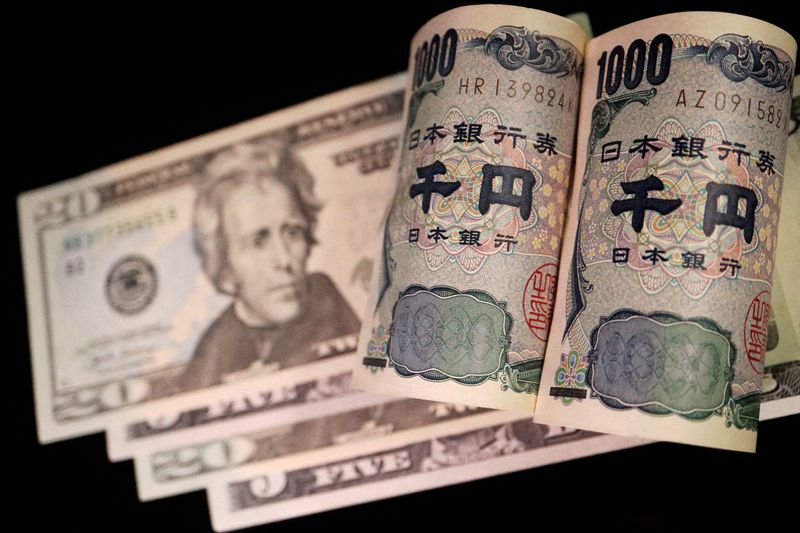By Herbert Lash and Stefano Rebaudo
(Reuters) -The dollar slid from near 5-1/2-month highs on Wednesday after Federal Reserve officials reiterated the rate-cutting cycle was on hold pending new economic data, while the monetary easing outlook for major central banks remained little changed.
Top U.S. central bank officials, including Fed Chair Jerome Powell on Tuesday, have provided little indication into when interest rates may be cut, saying instead that monetary policy needs to be restrictive for longer.
Recent data shows the U.S. economy remains stronger than expected, leading investors to reduce their bets on future rate cuts. Meanwhile, risks of a broadening Middle East conflict have added to the dollar’s safe-haven appeal in the short term.
Marvin Loh, senior macro strategist at State Street (NYSE:) in Boston, said that Powell “needed to come back into the center. He was definitely one of the more dovish voices out there. He can’t afford to be the outlier when he’s the chairman.”
After last week’s hotter-than-expected reading of U.S. consumer prices, the market has reduced the number of quarter-point rate cuts expected by the Fed this year to less than two. The first is now seen in September, later than a prior June.
A more hawkish view from the Fed has led Treasury yields to move higher and strengthened the dollar’s outlook as the market consolidates prices around the current level.
“If for no other reason than the Fed will keep rates elevated, that will attract flows into the U.S.,” said Thierry Wizman, global FX & rates strategist at Macquarie in New York, adding that greater volatility across markets due to higher yields could prompt a flight to quality into the dollar.
In addition, U.S. economic data, unlike China and Europe, is still fairly robust, Wizman added.
“The Fed does not have to worry too much about those economies as much as they need to worry about full employment in the U.S. and inflation,” Wizman said.
The , a measure of the U.S. currency against six major peers, was down 0.24% after hitting a five-month high on Tuesday, and the euro rose 0.34% to $1.0653.
The dollar index is up about 4.7% year-to-date, while the euro is down roughly 3.5%.
“We pushed everything as hard as we could for now, which means from a yield perspective and a higher dollar perspective, we’ll consolidate and trade around the range,” Loh said. “We did build a lot of hawkishness over the course of the last six weeks.”
European Central Bank policymakers continued to make the case for an interest rate cut in June on Tuesday as inflation remains on course to ease back to 2% by next year, even if the path for prices still proves bumpy.
YEN WORRIES
The yen strengthened 0.23% at 154.37 per dollar, just below 154.79 per dollar reached on Tuesday, its weakest level in 34 years.
Market participants raised the bar of a possible intervention by the Bank of Japan (BOJ) to prop up the Japanese currency, now mentioning the 155 level from the previous 152, even if they believed the BOJ could step in at any time.
They flagged that the latest fall in the Japanese currency was in line with fundamentals, reflecting the pricing of Fed policy, and that authorities were analyzing not just the recent yen declines but factors that were driving the moves.
“We think that the potential for BOJ to intervene to bolster the yen appears less evident, given that the dollar is strengthening on a relatively more hawkish Fed,” said Yvan Berthoux, forex strategist at UBS Investment Bank.
Market participants believe that as long as the fall in yen is gradual and led by fundamentals, the probability of a BOJ intervention is low.
“Rhetoric from officials has been more focused on speed of a move rather than levels themselves,” said Kieran Williams, head of Asia FX at InTouch Capital Markets.

Japan last intervened in the currency market in 2022, spending an estimated $60 billion to defend the yen.
Hedge funds have built up their biggest bet against the yen in 17 years, raising the prospect that when Japan’s embattled currency does rebound, the short-covering rally could be a powerful one.

